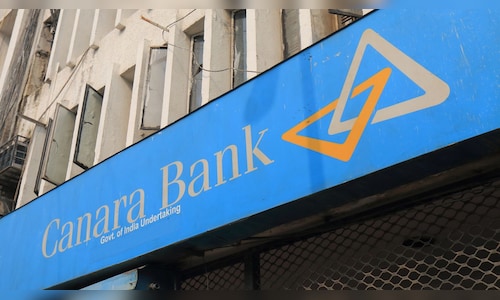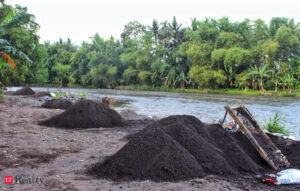Canara Bank prioritises risk control over growth as gold loan portfolio crosses ₹1.5 lakh crore

Over the past three years, Canara Bank’s gold loan portfolio grew between 25% and 31%, positioning it as a significant asset within the bank’s overall mix.
However, as the portfolio crossed ₹1.5 lakh crore, the bank chose to prioritise risk control over rapid expansion.
“In metropolitan cities, we have stopped lending gold against agriculture purposes, and we discontinued our interest subvention for these loans in all branches,” Raju explained.
To maintain a stable growth trajectory, Canara Bank launched a retail gold loan product in metropolitan areas, characterised by higher pricing and a lower loan-to-value (LTV) ratio.
According to Raju, the average LTV ratio for Canara Bank’s gold loan portfolio stands at 66.73%, significantly lower than the regulatory expectations of 75% to 80%, even for agricultural lending.
This cautious strategy has seen the bank’s gold loan growth rate taper from 30% to 17%, but Raju remains confident that 15% growth is sustainable moving forward. “Our growth might have moderated, but this measured approach is critical to ensure quality and longevity in this sector,” he remarked.
In addition to recalibrating the gold loan portfolio, Canara Bank has made notable strides in asset quality, an area that has shown considerable improvement over the last quarter.
Raju highlighted that the bank achieved a slippage rate of only 1% in the latest quarter, with slippages totaling ₹2,300 crore.
In a significant positive, recoveries and upgrades outpaced slippages, amounting to over ₹3,500 crore, which bolstered Canara Bank’s asset quality ratios. The bank’s gross Non-Performing Asset (NPA) ratio dropped from 4.14% to 3.73%, while net NPA reduced from 1.24% to 0.99%.
In Q2FY25, the bank reported a net profit of ₹4,014 crore, marking an 11.3% year-on-year increase from ₹3,605 crore, largely attributed to improved asset quality and lower NPAs.
In a regulatory filing, Canara Bank disclosed that its gross NPA ratio had decreased to 3.73%, compared to 4.76% in the previous year, while net NPA was down to 0.99%, reflecting a reduction of 42 basis points.
These are the excerpts of the interview.
Q: Gold as a percentage of your total mix I think the last time we chatted was around 15% and it appears there is traction on that particular vertical. Could you tell us what has been the gold loan growth, what percentage of your book it is, where do you see it headed and how is that portfolio growing?
Raju: The last three years in the gold on portfolio we used to grow around 25%-31% but when our portfolio crossed ₹1.5 lakh crore, we thought that we have to take some precaution because we are the industry leader in the gold loan portfolio in India. So we have taken several steps where we have discontinued certain things. In the metropolitan cities, we are not lending gold against agriculture purposes. We have discontinued our interest subvention for these things in all the branches. And we have strengthened our assessments and all. To compensate this in the metropolitan cities, we have launched a retail product at a much higher pricing and a much lower LTV ratio. Our average LTV ratio in the gold loan portfolio is around 66.73 which is much much below than the regulator expectation of 75 to 80% even including agriculture. But now because of these decisions our growth has come down from 30% to 17%, but we expect that 15% growth will continue in the gold loan.
Q: Just give us some guidance on asset quality from here out.
Raju: Recoveries and the slippages, we could control very much in the current quarter, where first time we have touched only 1% of slippage. And our slippages in absolute numbers also it was only ₹2,300 crores as against that recoveries and upgradation has crossed ₹3,500 crores. That has given a cushion to us on improving our asset quality ratios. So just in one quarter gross NPAs we have reduced it from 4.14% to 3.73%. NPA also we reduced from 1.24% to 0.99%. Our provision coverage ratio is also from 89 to almost 91. Because last two years whatever the decisions we have taken, the underwriting standards have improved and that is giving the benefits now.
Also our SMA 0, SMA 1, and SMA 2 are much below than the June quarter, but only in two accounts – one of the central PSU steel industry, that exposure is reflecting in the SMA 2 and one more state government irrigation project is oscillating between SMA 2, SMA 1 and SMA 0. As of date it has come down to SMA 1. But we don’t see too much concern on these two. These two exposures total together is not more than ₹6,000 crores. If I remove that, I will be below the June quarter. But these two, I am not seeing too much concern. But of course, for the safety, we have already provided 15% provision. And the state government, guarantee is there, so we don’t see any threat in slippages.
Watch accompanying video for entire conversation.








